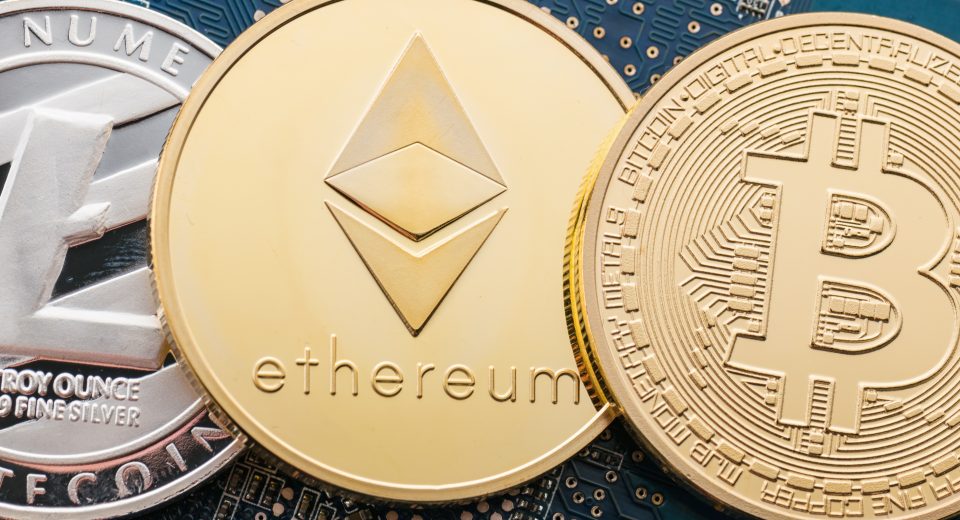Product in the Spotlight: Monero

Just like Bitcoin, Monero’s origins are unknown. The mysterious Nicolas Van Saberhagen – likely to be a pseudonym of the creator or group of creators – coded the crypto coin into existence in 2013, along with a developer known only as ‘thankful_for_today.’ Monero was created to solve one particular issue with Bitcoin – anonymity.
Contrary to popular belief, Bitcoin transactions are not anonymous. If someone’s Bitcoin address is linked to their credentials, it is possible to track all transactions pertaining to that address, on the public ledger. In contrast, Monero not only keeps its users anonymous, but also groups each transaction with hundreds of others, making the job of tracing one particular transaction virtually impossible. The ring signatures conceal not only the identities of senders and receivers, but also hide the values of individual transactions.
Once an obscure currency, Monero gained a strong foothold in 2016. In 2017, it saw a huge rally of almost 2,500%, breaking the $100 price barrier in August 2017. At a market cap of approximately $2.5 billion, it currently holds the 13th position on the list of tradable cryptocurrencies.
What Makes Monero So Popular?
Privacy Features
The “privacy on default” feature is its USP. Every Monero transaction uses ‘RingCT’ and stealth addresses to provide privacy to users. Although Dash has been the more privacy focused coin, its cryptography and infrastructure have been topics for debate amongst experts and pioneers, like Peter Todd. This has motivated leading investors to turn their attention to Monero. The presence of this coin’s automatic privacy mode makes it score an advantage over other cryptocurrencies, where such features are either missing or optional.
Superior Mining Algorithm
Bitcoin mining depends on custom-made ASIC mining chips, which work on high-performance computers. In contrast, for Monero, no special mining equipment is necessary, which has resulted in lower electricity costs. The opportunity for ‘equal mining’ could also lead Monero to attract more people across different geographical borders in the future.
Block Limit Size is Adaptive
While Bitcoin blocks take an average of 10 minutes to be created, Monero blocks take 2 minutes. Moreover, unlike Bitcoin blocks, Monero ones do not have a ceiling for the block size. The size automatically expands for huge transaction volumes.
Invisible Internet Project
There are talks of integrating an I2P layer into Monero for future transactions. This will protect users from passive network monitoring. Now, payments will not only be untraceable, even the currency will remain invisible from those snooping around in the network.
A Follower Base on the Dark Web
Recent forensic research has revealed that the use of Monero is higher than Bitcoin on the dark net, owing to its superior privacy features. However, tech enthusiasts argue that its use on the dark web is not only for illegal activities. It is a valuable tool for independent journalists, political dissidents and whistleblowers, who are all at loggerheads with government establishments. Companies like BolehVPN lets its customers pay for VPN services in XMR.
Adoption in Mainstream Projects
Despite catching the attention of criminals, the Monero team maintains that the technology has been developed for ordinary users, to provide them the privacy that the traditional banking system doesn’t guarantee. For this, they are increasingly associating the cryptocurrency with known names and good projects.
In December 2017, Monero’s lead developer, Riccardo Spagni, initiated “Project Coral Reef.” A total of 45 artists, including Mariah Carey, Sia and Roger Waters, will now accept the alt coin as a payment method for their music, in return providing customers with attractive discounts. Monero’s integration into the music industry will drive its value. Also, if reports are to be believed, Monero is in talks with Litecoin, another popular cryptocurrency, to form a partnership, facilitating the exchange of the two currencies with each other.
Fungibility and Ease of Adoption
This is an economic concept that makes a currency highly valued. An advanced level of privacy makes each Monero coin “untainted.” This means that every coin can be replaced with another. It is compatible with Windows, MacOS, Linux, Android and FreeBSD, making it easy to mine.
Backed by a Good Team
The developer team, comprising 180 people, has reached key milestones that are hard to come by in forks and upgrades. It has a good relationship with the community and is punctual with upgrades, speed, security and anonymity.
Issues of Scalability
The Monero “Bulletproofs” are short, zero-knowledge and non-interactive proofs that reduce transaction times by almost 70%. This makes the network validation process faster and with lower transaction fees. While most cryptocurrencies, including Bitcoin, suffer from scalability issues, this network has been able to overcome that.
Monero works on a principle that every person has to be their own bank, going against the idea of a financial intermediary. It works on a technology that shares similarities with Virtual Private Network (VPN), aiding in faster, secure and anonymous transactions. This technology will make it much more valuable in future. A new Monero wallet is currently being developed on Ruby, which will make future trading easier too. As it is increasingly accepted in mainstream projects and gets listed on major exchanges, its popularity as a favourite currency of the dark web will gradually diminish.
Trading Monero CFDs
Monero is available for trading on major cryptocurrency exchanges, in the form of pairs with BTC and USD. It can be bought with cryptos like Bitcoin but can be a little difficult to buy with fiat money. Most people buy it in exchange for other crypto coins.
The problem is that there is a dearth of wallets for Monero, and as of June 2018, no hardware wallets support it. Wallets as such are prone to hacking and thefts, and an absence of a secure wallet makes it a risky buy. But the price volatility of Monero makes it an ideal investment to gain quick profits.
Those who don’t want to keep Monero in a wallet often turn to CFD trading. Through CFDs, one can speculate on prices, without actually having to own a single coin. If the market moves in your favour, the broker will pay you the difference, and if it goes against your predictions, you will need to pay up a sum not more than the purchase value. In addition, CFDs allow you to take advantage of both rising and falling markets.
It is important to trade CFDs only through a regulated broker, who maintains strict standards to protect your investment. In addition, the right risk management tools must be put in place. For beginners, taking advantage of demo accounts before investing real money would be the best course of action.




